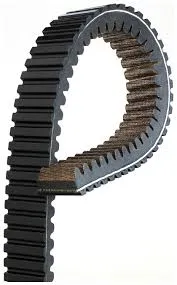- Arabic
- French
- Russian
- Spanish
- Portuguese
- Turkish
- Armenian
- English
- Albanian
- Amharic
- Azerbaijani
- Basque
- Belarusian
- Bengali
- Bosnian
- Bulgarian
- Catalan
- Cebuano
- Corsican
- Croatian
- Czech
- Danish
- Dutch
- Afrikaans
- Esperanto
- Estonian
- Finnish
- Frisian
- Galician
- Georgian
- German
- Greek
- Gujarati
- Haitian Creole
- hausa
- hawaiian
- Hebrew
- Hindi
- Miao
- Hungarian
- Icelandic
- igbo
- Indonesian
- irish
- Italian
- Japanese
- Javanese
- Kannada
- kazakh
- Khmer
- Rwandese
- Korean
- Kurdish
- Kyrgyz
- Lao
- Latin
- Latvian
- Lithuanian
- Luxembourgish
- Macedonian
- Malgashi
- Malay
- Malayalam
- Maltese
- Maori
- Marathi
- Mongolian
- Myanmar
- Nepali
- Norwegian
- Norwegian
- Occitan
- Pashto
- Persian
- Polish
- Punjabi
- Romanian
- Samoan
- Scottish Gaelic
- Serbian
- Sesotho
- Shona
- Sindhi
- Sinhala
- Slovak
- Slovenian
- Somali
- Sundanese
- Swahili
- Swedish
- Tagalog
- Tajik
- Tamil
- Tatar
- Telugu
- Thai
- Turkmen
- Ukrainian
- Urdu
- Uighur
- Uzbek
- Vietnamese
- Welsh
- Bantu
- Yiddish
- Yoruba
- Zulu
Гру . 01, 2024 05:20 Back to list
Superior Performance of Premium Transmission Belts for Enhanced Machinery Efficiency
High-Quality Transmission Belts A Key Component in Modern Machinery
In the intricate world of machinery and mechanical systems, ensuring efficient operation is paramount. One of the critical components contributing to this efficiency is the transmission belt. High-quality transmission belts are essential not only for the performance of machines but also for their longevity and reliability. This article delves into the importance of high-quality transmission belts, their types, applications, and factors to consider when selecting them.
Understanding Transmission Belts
Transmission belts are flexible bands used to transfer motion and power between different components of a machine. They play a crucial role in a variety of applications, from automotive engines to industrial machinery. These belts connect pulleys, allowing for efficient power transmission and enabling various mechanical operations. The construction material, design, and quality of these belts significantly impact their performance, durability, and efficiency.
Types of Transmission Belts
There are several types of transmission belts, each designed for specific applications
1. V-Belts These are widely used in industrial applications due to their flexibility and ability to handle high loads. They feature a trapezoidal cross-section, allowing them to wedge into the grooves of pulleys, which enhances friction and power transmission.
2. Timing Belts Also known as synchronous belts, timing belts have teeth that mesh with gear teeth to ensure precise timing and synchronization of machinery. This is particularly important in applications where timing is crucial, such as in automotive camshaft drives.
3. Flat Belts These are simple belts that have a rectangular cross-section. They are predominantly used in lower power applications and are known for their ability to transmit power over long distances.
4. Round Belts Often used in light-duty applications, round belts provide excellent flexibility and are commonly found in conveyors and similar systems.
Benefits of High-Quality Transmission Belts
Investing in high-quality transmission belts yields numerous benefits. First and foremost, they offer enhanced performance. High-quality belts are designed to minimize slippage, which means better power transmission efficiency and reduced energy consumption. This is particularly important in industries where operational costs are a significant concern.
high quality transmission belts

Durability is another critical factor. High-quality transmission belts are made from superior materials that can withstand extreme conditions, such as temperature variations, chemical exposure, and heavy loads. This durability translates into longer service life, reducing the frequency of replacements and maintenance, thereby saving costs in the long run.
Additionally, high-quality belts are less prone to failure. A failure in a transmission belt can lead to costly downtime and potential damage to other machine components. By using quality belts, companies can reduce the risk of such failures, ensuring smoother operation and reliability.
Factors to Consider When Choosing Transmission Belts
When selecting transmission belts, several factors should be taken into account to ensure optimal performance.
1. Material Look for belts made from high-grade materials such as rubber, polyurethane, or nylon, which offer flexibility, strength, and resistance to wear and tear.
2. Size and Compatibility Ensure the belt is the right size for your application. This includes considering the width, length, and type of belt to match the pulleys and machinery specifications.
3. Application Requirements Assess the operational environment. Factors like temperature, humidity, and exposure to chemicals can influence the choice of belt material.
4. Load Capacity Determine the load that the belt will need to handle during operation and choose a belt rated for those conditions.
5. Brand Reputation Opt for belts from reputable manufacturers known for their commitment to quality and reliability.
Conclusion
High-quality transmission belts are integral to the functionality and efficiency of machinery across diverse sectors. Understanding the different types, benefits, and selection criteria ensures that businesses invest in the most suitable belts for their applications. By prioritizing quality, companies can enhance their operational efficiency, reduce downtime, and achieve substantial long-term savings. In a competitive landscape, the choice of transmission belts is more than just a component decision; it is a strategic investment in the future performance of machinery.
-
Korean Auto Parts Timing Belt 24312-37500 For Hyundai/Kia
NewsMar.07,2025
-
7PK2300 90916-T2024 RIBBED BELT POLY V BELT PK BELT
NewsMar.07,2025
-
Chinese Auto Belt Factory 310-2M-22 For BMW/Mercedes-Benz
NewsMar.07,2025
-
Chinese Auto Belt Factory 310-2M-22 For BMW/Mercedes-Benz
NewsMar.07,2025
-
90916-02660 PK Belt 6PK1680 For Toyota
NewsMar.07,2025
-
drive belt serpentine belt
NewsMar.07,2025

